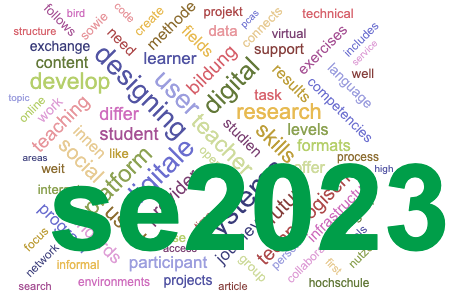Introducing Interactive Grammar: How to Develop Language Competence with Research-based Learning
Schlagworte:
Academic Education, Grammar, Grammatik, Language Acquisition, Language Skills, Orthography, Rechtschreibung, School Education, Schulbildung, Spracherwerb, Sprachwissen, Vocabulary, Wortschatz, akademische Ausbildung, e-learningAbstract
Wir präsentieren die Implementierung einer interaktiven E-Learning-Plattform für das Lernen im Klassenzimmer und das Selbststudium, die dabei hilft, deutsche Sprachkompetenz – Wortschatz, Rechtschreibung und Grammatik – auf verschiedenen Ebenen und für alltägliche Anwendungen weiterzuentwickeln. Das LernGrammis-Portal richtet sich mit jeweils passenden Lerninhalten und interaktiven Bausteinen gleichermaßen an Schüler und Studierende, (angehende) Lehrkräfte und L2-Lernende der deutschen Sprache. Damit bietet es der digitalen Vernetzungsinfrastruktur für die Bildung eine einzigartige, frei verfügbare und wissenschaftlich fundierte Lernressource. Unter Anwendung des innovativen Konzepts des „Forschenden Lernens“ bietet LernGrammis Lehrkräften Ideen für die Unterrichtsplanung und Lernenden spezielle Module zur Entwicklung neuer Fähigkeiten durch die Erkundung authentischer Sprachressourcen und auf diese Weise die Beantwortung maßgeschneiderter, niedrigschwelliger Forschungsfragen. Anhand erprobter Praxisbeispiele demonstrieren wir den Ansatz, seine Stärken und Möglichkeiten sowie erste Auswertungsergebnisse von Nutzerfeedback.Downloads
Veröffentlicht
2023-09-11
Ausgabe
Rubrik
Beiträge



